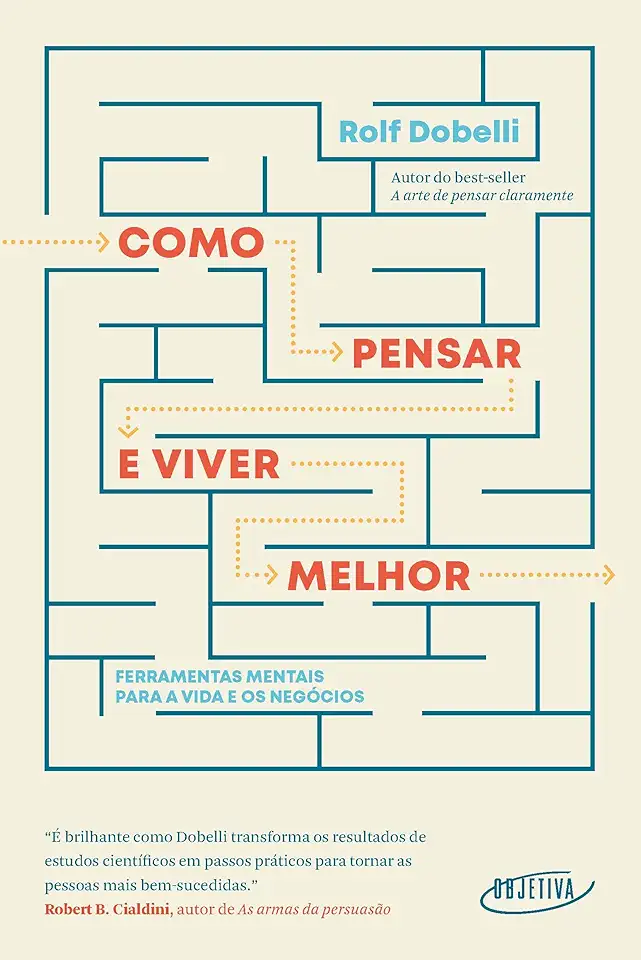
The Art of Thinking Clearly - Dobelli, Rolf
The Art of Thinking Clearly: How to Avoid the Traps and Improve Your Decision-Making
In his book "The Art of Thinking Clearly," Rolf Dobelli identifies 99 thinking errors that can cloud our judgment and lead us to make poor decisions. These errors are often subtle and difficult to detect, but they can have a profound impact on our lives.
Dobelli draws on a wide range of sources, including psychology, economics, and philosophy, to explain these errors and how to avoid them. He provides clear and concise explanations of each error, along with examples of how it can manifest itself in our daily lives.
The book is organized into four parts:
Part One: Thinking About Thinking
This section introduces the concept of thinking errors and explains why they are so common. Dobelli also discusses the importance of critical thinking and how to develop it.
Part Two: Errors of Perception
This section identifies 20 errors that can distort our perception of reality. These errors include confirmation bias, the tendency to seek out information that confirms our existing beliefs, and the Einstellung effect, the tendency to interpret new information in light of our existing expectations.
Part Three: Errors of Reasoning
This section identifies 30 errors that can lead us to make faulty conclusions. These errors include the gambler's fallacy, the belief that a random event is more likely to occur after a series of losses, and the sunk cost fallacy, the tendency to continue investing in a losing proposition because we have already invested so much.
Part Four: Errors of Emotion
This section identifies 29 errors that can cloud our judgment and lead us to make decisions based on emotion rather than reason. These errors include the anchoring bias, the tendency to give too much weight to the first piece of information we receive, and the halo effect, the tendency to form an overly positive or negative impression of someone based on a single trait.
"The Art of Thinking Clearly" is a valuable resource for anyone who wants to improve their decision-making skills. Dobelli's clear and concise explanations of thinking errors make this book a must-read for anyone interested in critical thinking and self-improvement.
Why You Should Read This Book
"The Art of Thinking Clearly" is a must-read for anyone who wants to improve their decision-making skills. Here are a few reasons why you should read this book:
- It's full of practical advice. Dobelli provides clear and concise explanations of 99 thinking errors, along with examples of how they can manifest themselves in our daily lives. This advice can help you to avoid these errors and make better decisions.
- It's based on sound research. Dobelli draws on a wide range of sources, including psychology, economics, and philosophy, to support his claims. This research provides a solid foundation for the advice that he offers.
- It's easy to read. Dobelli's writing style is clear and engaging, making this book a pleasure to read. He uses humor and real-world examples to illustrate his points, which helps to keep the reader interested.
How This Book Can Help You
"The Art of Thinking Clearly" can help you to:
- Make better decisions. By avoiding the thinking errors that Dobelli identifies, you can make more informed and rational decisions.
- Improve your critical thinking skills. This book will teach you how to think more critically about the information that you encounter. You'll be able to identify and challenge faulty arguments, and you'll be less likely to be swayed by emotion or bias.
- Become more aware of your own thinking. This book will help you to understand how your own mind works. You'll be able to identify your own thinking errors and take steps to correct them.
Conclusion
"The Art of Thinking Clearly" is a valuable resource for anyone who wants to improve their decision-making skills. Dobelli's clear and concise explanations of thinking errors make this book a must-read for anyone interested in critical thinking and self-improvement.